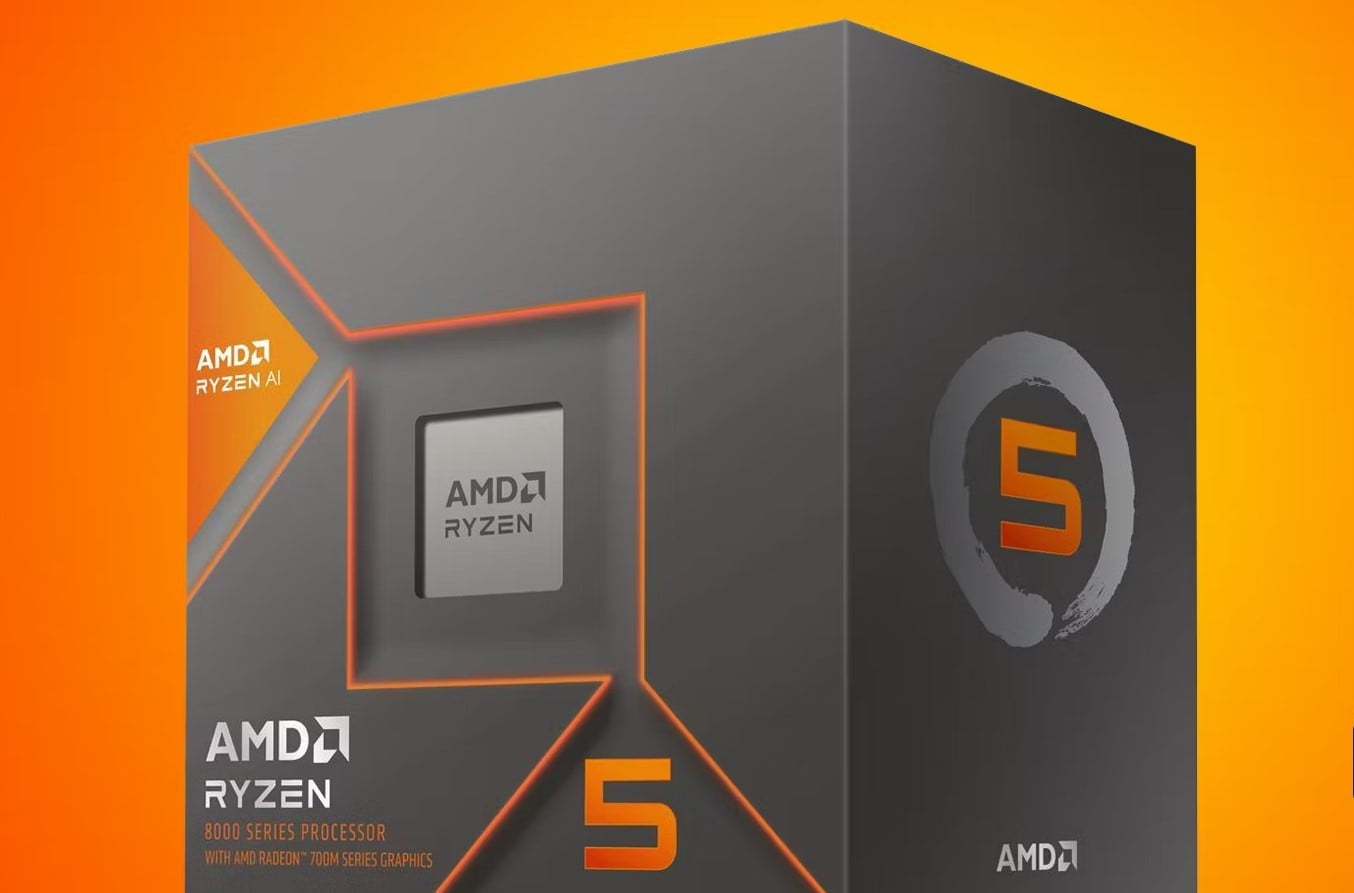AMD Ryzen 5 8600G Review
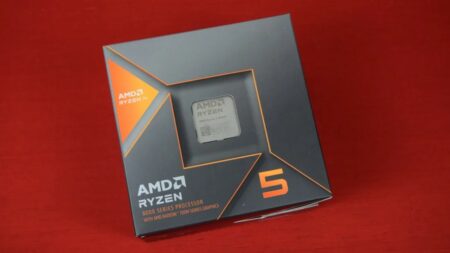
PROS
- Powerful integrated graphics
- Six Zen 4 CPU Cores
- Low power draw
- Budget price
CONS
- Lackluster CPU productivity performance
- Runs a bit hot
AMD RYZEN 5 8600G SPECS
| Core Count |
6 |
| Thread Count |
12 |
| Base Clock Frequency |
4.3 GHz |
AMD has elevated integrated graphics processors (IGPs) to unprecedented heights with the release of its Ryzen 8000 G-series desktop CPUs. While the Ryzen 7 8700G may have been considered a bit expensive to be a top choice, the more budget-friendly Ryzen 5 8600G is a compelling option at. Equipped with a powerful Radeon IGP, the Ryzen 5 8600G is an enticing choice for budget-conscious gamers, earning it an Editors’ Choice award in the budget-CPU category.
AMD has taken integrated graphics processors (IGPs) to a whole new level with its Ryzen 8000 G-series desktop CPUs. The Ryzen 7 8700G, the most powerful chip in this lineup, may have been a bit too costly to be a highly appealing choice, but the more affordable Ryzen 5 8600G is a great option at. With a fast Radeon IGP, the Ryzen 5 8600G is an attractive choice for gamers on a budget, and it has earned an Editors’ Choice award in the budget-CPU category.
Configuration and Architecture: The Affordable IGP Gaming CPU.
The AMD Ryzen 5 8600G shares a close relationship with the AMD Ryzen 7 8700G and various mobile AMD processors, all of which are built on the same chip design. This chip features a total of eight AMD CPU cores utilizing the “Zen 4” architecture, along with twelve AMD RDNA 3 compute units. Within each compute unit are 64 streaming processors, four TMUs, two ROPs, and a ray-tracing core.
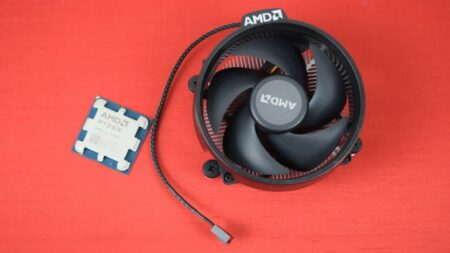
The higher-end Ryzen 7 8700G hardware empowers the processor to effectively handle demanding games, albeit not at the level of most graphics cards. Nevertheless, it competes decently against the lowest-end graphics cards available in the market and even surpasses a few of them. This achievement is remarkable, although it would be even more impressive if the Ryzen 7 8700G didn’t come with a.
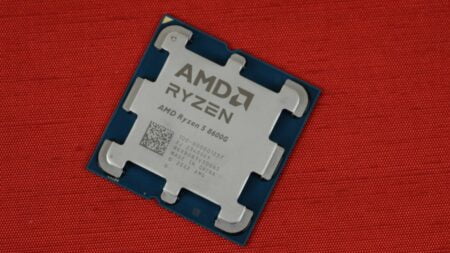
The Ryzen 5 8600G, presents a more enticing choice, and the compromises made for the reduction in price are worthwhile. In terms of hardware resources, you only sacrifice about a quarter of the total. While the Ryzen 5 8600G has six CPU cores instead of eight, it maintains a similar clock speed to the Ryzen 7 8700G and both processors boast 16MB of L3 cache. Consequently, you can anticipate the Ryzen 5 8600G and Ryzen 7 8700G to perform quite similarly in tasks that don’t heavily utilize multiple cores. The Ryzen 7 8700G only gains an advantage when more than six cores are utilized.
The Ryzen 5 8600G has a reduced graphics subsystem, featuring only eight active compute units. This configuration includes 512 streaming processors, 32 TMUs, 16 ROPs, and eight ray-tracing cores. The clock speed remains relatively unchanged, with the Ryzen 7 8700G’s Radeon 780M IGP being just 100MHz faster than the Ryzen 5 8600G’s Radeon 760M IGP.
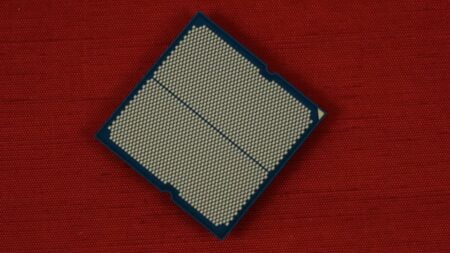
Despite the noticeable cutbacks reflected in benchmarks, the decrease in price outweighs the decline in performance. The Ryzen 7 8700G, , was not a strong recommendation due to the possibility of purchasing a more cost-effective processor and graphics card separately, resulting in superior outcomes at a comparable price point. However, achieving the same outcome with the Ryzen 5 8600G is considerably more challenging.
Examination Arrangement and Rivalry.
I conducted a series of tests on the Ryzen 5 8600G processor, utilizing an ASRock B650 Pro RS motherboard. The system was equipped with two 16GB sticks of G.Skill DDR5 RAM, operating at the processor’s maximum supported RAM speed of 5,200MHz. To ensure optimal cooling during the tests, a Cooler Master MasterLiquid PL240 Flux 240mm water cooler was employed. Additionally, the system was powered by a SilverStone DA850 850-watt power supply. It is worth noting that AMD includes a stock air cooler, the capable Wraith Stealth, with the processor, but for the purpose of maintaining consistency with our other chip tests, we utilized our liquid cooler for the benchmarks mentioned above.
The components were assembled on a Praxis Wetbench open testbed, with the inclusion of an Nvidia GeForce RTX 3080 graphics card for testing purposes, excluding the integrated graphics gaming tests. The testing environment utilized Windows 11 Pro with the most recent updates applied.
The AMD Ryzen 5 8600G faces tough competition from its closest rival, the AMD Ryzen 7 8700G, which offers superior performance but comes at a higher price point. Intel also presents some competitive options with the Intel Core i5-13600K and the Core i5-13400F, although these chips have their drawbacks. The Core i5-13600K is more expensive, while the Core i5-13400F lacks integrated graphics. However, it can be argued that the Core i5-12600K is a stronger contender, but its availability may be limited as it has been on the market for a while now.
CPU Tests: The 8600G’s Vulnerability.
In starting the benchmark tests with Cinebench R23, it is evident that the Ryzen 5 8600G fell slightly short compared to the Ryzen 7 8700G. Furthermore, it showed lower performance than the Core i5-12600K and, to a lesser degree, the Core i5-13400F.
In my two Adobe-centric assessments, the Ryzen 5 8600G lagged behind both the Core i5-12600K and the Ryzen 7 8700G. The Core i5-13400F struggled in Premiere Pro and was unable to complete the Adobe Photoshop benchmark. As a result, the Ryzen 5 8600G managed to take the lead in this particular CPU test, showcasing its capabilities.
The Ryzen 5 8600G faced challenges during the HandBrake test, resulting in it ranking at the bottom of the charts. Its performance in Blender was also lackluster. However, in POV-Ray, the Ryzen 5 8600G showed some improvement, outperforming the Ryzen 7 5700X and the Core i5-13400F in single-threaded tasks. Unfortunately, this advantage did not translate to the multi-threaded test, where the Ryzen 5 8600G once again landed in last place. While the 8600G can handle basic tasks adequately, it may struggle with demanding CPU-bound rendering and exporting tasks.
Testing of the graphics card revealed a few minor issues, however, they were not the main focus of the evaluation.
The Ryzen 5 8600G not only features a lower core count compared to the majority of CPUs tested, but it also boasts a smaller L3 cache. While the exact effect on CPU benchmarks remains somewhat elusive, the impact on gaming performance is more pronounced.
The Ryzen 5 8600G exhibited the lowest performance in 3DMark’s Time Spy benchmark among all the chips tested, however, this did not translate to most real-world tests. When it comes to F1 22, the Ryzen 5 8600G delivered solid performance overall, with its 1440p and 4K performance aligning with the other CPUs tested. (In these higher-resolution tests, the RTX 3080 GPU is primarily responsible for the heavy lifting.) While it was slightly slower at 1080p compared to certain Intel CPUs, the variance of around 3% is hardly discernible.
The Ryzen 5 8600G in Guardians of the Galaxy performed slightly worse than the competition at 1080p, being approximately 7% slower than the Core i5-13400F. It lagged even further behind the Core i5-12600K and several other chips, which can be attributed to its smaller L3 cache pool. This is evident when comparing it to the Ryzen 7 7600X, a similar processor with six CPU cores and similar clock speeds, but with double the L3 cache at 32MB. The fact that the Ryzen 5 8600G only falls behind at higher frame rates further supports the notion that its reduced cache pool is the main cause.
In Total War: Three Kingdoms, the Ryzen 5 8600G was found to be lagging behind at 1080p. However, the performance gap was even more pronounced in older games such as Bioshock Infinite and the 2013 version of Tomb Raider. Specifically, the Core i5-13400F outperformed the Ryzen 5 8600G by 9% at 1080p and 12% at 1440p, with most other processors showing even greater speed advantages. A similar trend was observed in Tomb Raider, with the Core i5-13400F boasting a 10% lead over the Ryzen 5 8600G at 1080p.
IGP Tests: Radeon 760M Perfectly Matches 1080p.
The performance of the Ryzen 5 8600G was underwhelming when paired with a discrete graphics card, however, it excelled when tested with the IGP. Boasting 512 streaming processors running at 2.8GHz, the Ryzen 5 8600G stands out as one of the top-performing IGPs I have evaluated. It is important to note that purchasing this processor to use with a separate video card would be a mistake, as it would overlook the superior value offered by the IGP.
It is sufficient to state that the 8600G outperformed all other competitors except for the 8700G in every aspect. Although it didn’t quite match the speed of the Ryzen 7 8700G, no other processors even came close to these two. Overall, the Ryzen 5 8600G ran most games at 1080p faster than the competition ran them at 720p.
Primarily, I conduct various tests on graphics cards and integrated graphics solutions such as the Radeon 760M. However, there is a slight overlap in Bioshock Infinite. I evaluate the performance of both graphics cards and IGPs in this game by utilizing the highest settings at a resolution of 1,920 by 1,080 pixels. As previously stated, the majority of graphics cards outperform the Ryzen 5 8600G and its IGP. Nevertheless, I included AMD’s slowest and most budget-friendly graphics card in the Bioshock chart for comparative purposes.
The Radeon RX 6400 exhibited significant improvement in performance in comparison. However, it is important to take into account that this graphics card has a retail price of approximately, which is more than half the cost of the Ryzen 5 8600G. If you decide to choose this option instead of purchasing the Ryzen 5 8600G, you would only have remaining for a CPU. Consequently, this would essentially compel you to acquire an older and less capable CPU than the Ryzen 5 8600G.
Electricity and Temperature.
the most energy-efficient socketed desktop CPUs I have tested in the past few years.
Across all categories, it utilized a lower amount of power compared to every other CPU listed, with the exception of the Ryzen 7 8700G which had a slightly lower idle power consumption. Despite this, the processor did experience significant heat buildup during testing, reaching temperatures as high as 90 degrees Celsius.
The final decision: The New IGP Gaming Champion.
When assessing a processor such as the AMD Ryzen 5 8600G, it is essential to consider the context. While the Ryzen 5 8600G is indeed a processor, it would be inaccurate to categorize it as identical to all other processors. The majority of processors we have evaluated prioritize CPU performance above all else. They are engineered with the objective of delivering optimal CPU performance while adhering to specific power, thermal, and budget limitations.
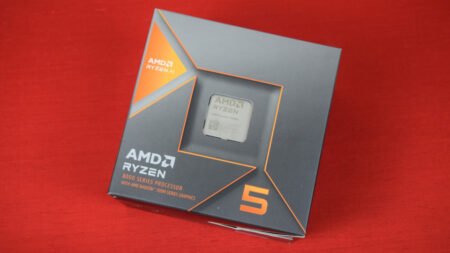
The Ryzen 5 8600G distinguishes itself by sacrificing some CPU processing power in exchange for a significant boost in graphics performance. While this trade-off may not be appealing for those looking to purchase a separate graphics card, the Ryzen 5 8600G caters to individuals who do not intend to invest in a graphics card. This processor is designed for users interested in gaming, particularly older titles or newer games such as F1 22, albeit with lower graphics quality settings, without the need to splurge on a high-end gaming PC.
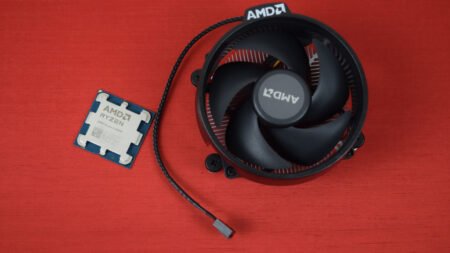
The Ryzen 5 8600G excels in this specific market segment and arguably outperforms any other available option. In contrast, the Ryzen 7 8700G, as mentioned earlier, is too expensive to effectively fulfill this role, as you can purchase a more compelling CPU and GPU combination for the same price. However, this is not the case for the Ryzen 5 8600G. Unless you search through eBay and acquire older or used hardware, it will be challenging to build a PC that can match the gaming performance of the Ryzen 5 8600G without spending more money. Therefore, the AMD Ryzen 5 8600G deserves our Editors’ Choice award for budget gaming CPUs.

